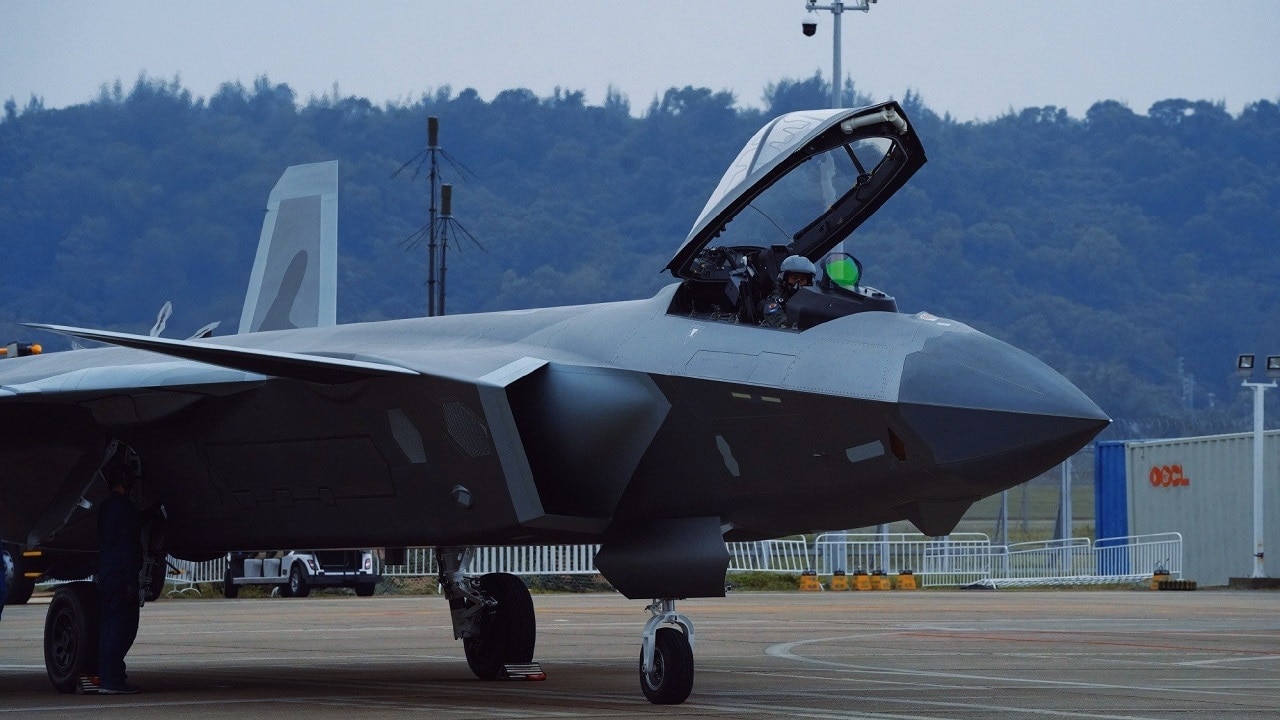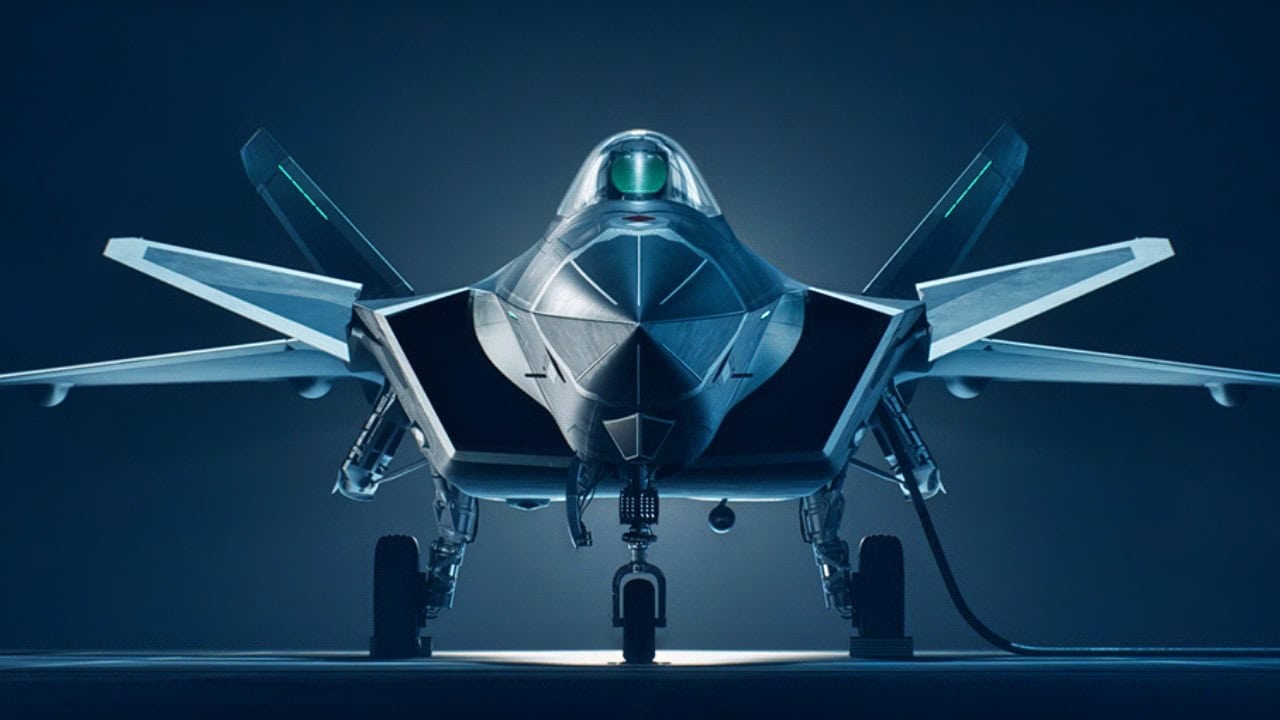The J-20 Fighter Keeps Getting Better: Many in the U.S. Air Force might know that the Chengdu J-20 fighter can fly in frightening “beast mode.”
That means the Chinese fifth-generation warbird can bring a pack of trouble to an aerial flight. Its long-range air-to-air missiles and precision-guided weapons for ground strikes make the Mighty Dragon one of the most effective fighters in the People’s Liberation Army Air Force (PLAAF) fleet.

J-20 Fighter. Image Credit: Creative Commons.
This weapons loadout is impressive, and its stealth characteristics allow it to dominate adversaries in its backyard.
J-20 Beast Mode Starts with PL-15 Missiles
The J-20 has internal weapons stores and hardpoints on its wings for external air-to-air missiles. This year, video and still photography images showed that the J-20 could launch what appear to be PL-15 medium-to-long-range air-to-air missiles.
The PL-15s were on four hardpoints under the wings. The airplane also displayed that it could carry external fuel tanks in that configuration. The PL-15 can also be deployed internally.
The PL-15 is radar-guided and accurate. It was first test-launched in 2011 and was reported by Chinese state media as a part of the J-20 in 2015 when it entered service. Its range is 186 miles. The upgraded variant PL-15E has a “folding tail structure.”
This design makes it easier to affix to the airplane. The projectile has a low radar signature. The PL-15E can be compared to the AIM-120D AMRAAM. It is 13 feet long and 440 pounds. The warhead weighs 66 pounds.
PL-10 Air-to-Air Missiles Have the Advantage
The J-20 also carries the shorter-range PL-10 air-to-air missile. This is a fourth-generation weapon. The PL-10 “adopts advanced infrared imaging guidance and can distinguish real enemy aircraft from fake target decoys. It can also be launched by a helmet sight worn by the pilot to achieve ‘seeing’ and ‘where to fight.’ Also, to effectively strike high maneuverability targets, the missile uses thrust vectoring technology,” according to GlobalSecurity.org.
Are They Better Than American AMRAAMs?
These two PLAAF missiles are forcing the United States to search for alternatives to their AMRAAMs. The U.S. Air Force is concerned that both PLAAF missiles in aerial combat could overwhelm an F-35 or F-22. The PL-15 has a more extended range than the AMRAAM, and its reduced radar signature makes it a tough customer. The dual-pulse rocket motor extends the PL-15’s range, resulting in high-speed attacks.
F-22 and F-35 Pilots Should Pay Attention
Since the J-20 could carry up to 12 PL-15s in beast mode, American battle planners must consider this when developing tactics, techniques, and procedures to address its potential. This is a stealthy warbird, after all, and it could challenge the F-35 and F-22 in a dogfight or in beyond-visual-range combat.

J-20 stealth fighter. Image Credit: Creative Commons.
A few J-20s in beast mode flying with conventionally armed internal weapons in other Mighty Dragons could place one group of airplanes in over-watch with the rest of the warbirds sent to engage the American stealth fighters in a vanguard formation.
The Americans wonder how survivable the F-35 and F-22 would be against such a battle tactic. The beast mode gives the J-20 a force multiplier effect that makes one ponder how well the J-20 could be used to overawe the American stealth fighters if Chinese radar and sensors could pick them up first.
PL-17s Have a Very Long-range Advantage
Plus, a J-20 in beast mode could fly with the new J-35 stealth fighter, and both could launch the very long-range PL-17, which may have a range of as long as 248 miles.
The PL-17 has “a dual-pulse solid rocket motor combined with a lofted trajectory to achieve the distance. The weapon is intended to engage what is sometimes referred to as high-value airborne assets, such as airborne early warning or tanker aircraft, according to the IISS think tank.
The PL-17 could also have “active and passive radar guidance” to sense a larger American airplane like the E-3D airborne early warning aircraft.
This will boil down to which warbird can sniff out a bogey first. American pilots must adjust their tactics if they are spotted first by the J-20 and carry out countermeasures quickly. The beast mode J-20 is a force to be reckoned with and is a development that should not be unexpected as the PLAAF continues to improve its munitions to give the Mighty Dragon air superiority in a combat engagement.
About the Author: Dr. Brent M. Eastwood
Brent M. Eastwood, PhD is the author of Don’t Turn Your Back On the World: a Conservative Foreign Policy and Humans, Machines, and Data: Future Trends in Warfare plus two other books. Brent was the founder and CEO of a tech firm that predicted world events using artificial intelligence. He served as a legislative fellow for U.S. Senator Tim Scott and advised the senator on defense and foreign policy issues. He has taught at American University, George Washington University, and George Mason University. Brent is a former U.S. Army Infantry officer. He can be followed on X @BMEastwood.

